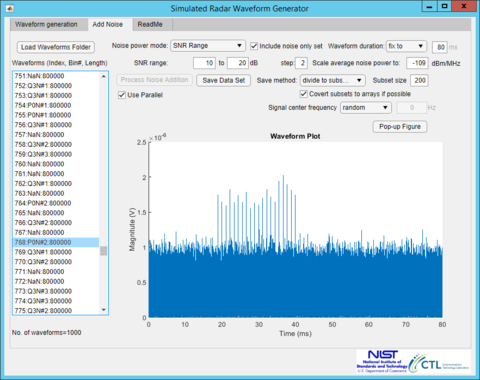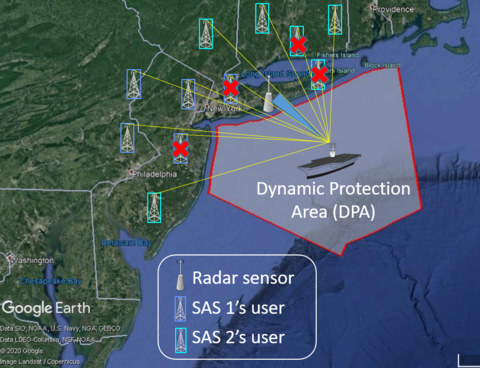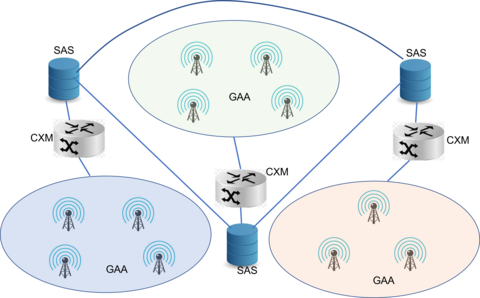Summary
The Citizens Broadband Radio Service (CBRS) band is 150 MHz of spectrum made available for commercial broadband use on a shared basis with the federal government. NIST is creating models, tools, and datasets to assist in the development and enhancement of commercial systems that protect mission-critical federal systems from harmful radio frequency interference.
Description
![USS George H.W. Bush equipped with air traffic control radar system operating in the 3.5 GHz band. Credit: U.S. Navy photo by Mass Communication Specialist 3rd Class Nicholas Hall [Public domain], via Wikimedia Commons](/sites/default/files/styles/480_x_480_limit/public/images/2018/02/06/cbrs_project.jpg?itok=ROv6eSwa)
The FCC Part 96 rules establish a three-tier architecture for sharing the radiofrequency (RF) spectrum from 3550 MHz to 3700 MHz. Commercial users of the 3.5 GHz Citizens Broadband Radio Service (CBRS) band will share this spectrum with existing incumbents, including the federal government which currently operates mission-critical radiolocation services in this spectrum.
NIST aims to enhance and innovate the wireless communication technologies, models, and algorithms currently used in the 3.5 GHz CBRS band. In addition to the research areas described below, ongoing research emphasizes on investigating machine learning and deep learning techniques for classification of radar and CBRS signals, path loss prediction, and channel estimation and cognitive receiver design.
ESC Sensor Detection and Placement

NIST has designed deep learning detectors to accurately detect the presence of radar signals for commercial 3.5 GHz sensors. (learn more)
SAS Incumbent Protection

NIST has developed test procedures and reference implementations that the regulator uses to certify commercial systems mediating access to this RF band. (learn more)
GAA Coexistence and Dynamic Spectrum Access

NIST has been engaged in the study of coexistence of the General Authorized Access (GAA) users in the CBRS band. (learn more)
ASSOCIATED PRODUCTS
Publications
- CBRS Operational and Functional Requirements
- Test and Certification for CBRS; SAS as Unit Under Test
Software
- Federal Incumbent Protection Procedure Reference Implementation
- Simulated Radar Waveform and RF Dataset Generator for Incumbent Signals in the 3.5 GHz CBRS Band
- Baseline Deep Learning Detectors for Radar Detection in the 3.5 GHz CBRS Band
Dataset
Major Accomplishments
- The team received a NIST Bronze Medal in 2019 recognizing the work in the standardization of CBRS in support of more efficient spectrum sharing between commercial and federal users.
- Led development of the federal incumbent interference protection test procedures, as well as test procedures for multiconstraint interference protection and select communication protocols, being used in certification of commercial systems.
- Created the reference implementation of the standardized federal incumbent protection procedure employed by commercial Spectrum Access Systems.
- Contributed to the CBRS requirements and protocol specifications for commercial systems published by the Wireless Innovation Forum’s Spectrum Sharing Committee, the standards body for CBRS.
- Developed detection algorithms, generation tools, and digital waveforms of emissions in the 3.5 GHz band suitable for development and testing of ESC sensors which are widely used by the industry and academia.
- Granted a patent “Apparatus and Method for Dynamically Controlling Spectrum Access” - US Patent Number 10,390,364.
- Pending patent application "Independently Managing Wireless Transmission by Individual Spectrum Access Systems in a Shared Radio Frequency Spectrum" - Patent Application Number US2021/0385664A1.

